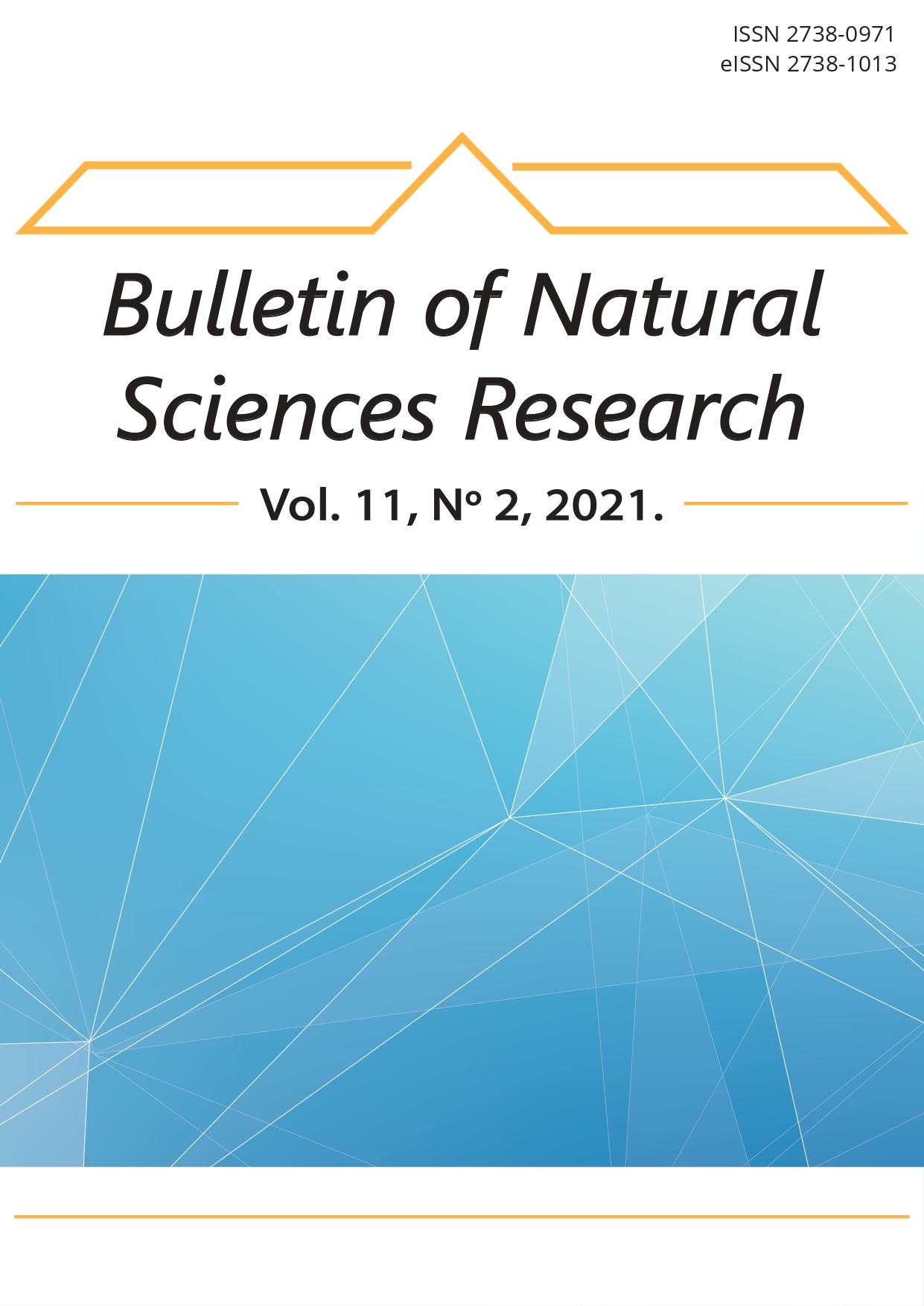INFLUENCE OF THE ACIDITY OF THE IODOUS ACID SOLUTION SYSTEM ON THE KINETICS OF THE DISPROPORTIONATION REACTION
Abstract
Influence of the acidity of the iodous acid (HOIO) solution system on the kinetics disproportionation reaction is examined in aqueous sulfuric acid solution (0.125 moldm-3). The disproportionation reaction rate constants were determined at 285, 291, 298 and 303 K based on data obtained under stationary conditions. The calculated rate constants increase with increasing temperature for different values of iodous acid and iodate concentrations. The average activation energy of 46 kJmol-1 was determined for the chosen temperature interval, by a graphical method. The values of pseudo-equilibrium concentrations of kinetically important and catalytic species H+, H2OI+ i IO3- in the disproportionation reaction were determined for the given experimental conditions based on the equilibrium dissociation reactions of sulfuric and iodous acids in the quasi-stationary state. The estimated values of sulfuric and iodous acid are predominant and higher than the concentration of the protonated ion of H2OI+.
References
Awtrey, A. D. & Connik, R. E. J. 1951. The Absorption Spectra of I2, I3-, I-, IO3-, S4O6= and S2O3=. Heat of the Reaction I3- = I2 + I-. Journal of the American Chemical Society, 73(4) pp. 1842-1843.
De Souza G. L. C. & Brown A. 2014. Probing ground and low-lying excited states for HIO2 isomers, J Chem Phys, 141(23), pp.234-303. https://doi.org/10.1063/1.4903789
Hegedűs, L., Wittmann, M., Noszticzius, Z., Yan, S., Sirimungkala, A., Försterling, H. & Field, R. J. 2001. HPLC analysis of complete BZ systems. Evolution of the chemical composition in cerium and ferroin catalysed batch oscillators: experiments and model calculations. Faraday Discussions, (120)21-38, pp. 85-104. https://doi.org/10.1039/B103432B
Jimenez J. L., Cocker D. R., Bahreini R., Zhuang H., Varutbangkul V., Flagan R. C., Seinfeld J. H., O’Dowd C., & Hoffmann T. 2003. New particle formation from photooxidation of diiodomethane (CH2I2). J. Geophys Res–Atmos, 108(D10), pp.4318. https://doi.org/10.1029/2002JD002452
Lengyel, I., Li, J., Kustin, K. & Epstein I. R. 1996. Rate Constants for Reactions between Iodine- and Chlorine-Containing Species: A Detailed Mechanism of the Chlorine Dioxide/Chlorite-Iodide Reaction †. Journal of the American Chemical Society, 118(15), pp. 3708-3719.
Mäkelä J. M., Hoffmann T., Holzke C., Väkevä M., Suni T., Mattila T., Aalto P. P., Tapper U., Kaupinen E. & O’Dowd C. 2002. Biogenic iodine emissions and identification of end-products in coastal ultrafine particles during nucleation bursts. J. Geophys. Res, 107(19), pp. 8110. https://doi.org/10.1029/2001JD000580
Marković, S., Rakićević, N. & Mišljenović, Đ. 2002. The temperature dependence of the disproportionation reaction of iodous acid in aqueous sulfuric acid solutions. Journal of the Serbian Chemical Society, 67(5), pp. 347-351. DOI: 10298/JSCO205347M
Marković, S. & Rakićević, N. 2006. Determination of the rate of iodous acid disproportionation in aqueous sulfuric acid solution. Reaction Kinetics and Catalysis Letters, 89(1) pp. 3-8. DOI: 10.107/S114-0.06-0.080-9
Marković, S. & Čekerevac, M. 2009. The rate of the disproportionation reaction of iodous acid at different acidity values in aqueous sulfuric acid solution. Reaction Kinetics and Catalysis Letters, 97(1), pp. 13-18. DOI: 10.107/S114-0.09-0.03-7
Marković, S. & Petrović, B. 2010. Kinetics of the disproportionation reaction of HIO2 in acidic aqueous solutions. International Journal of Chemical Kinetics, 42(11) pp. 687-691. DOI: 10.102/kin20516
Marković, S., Karkalic, R. & Petrović, B. 2015. Disproportionation reaction of iodous acid, HOIO. Determination of the concentrations of the relevant ionic species H+, H2OI+, and IO3−. Research on Chemical Intermediates, 41(3) pp. 1293-1300. DOI: 10.107/s164-0.13-1273-2.
Marković, S. & B. Petrović, B. 2016. Kinetics study of the disproportionation of the iodous acid inaqueous sulfuric acid solution, University thought, Publication in Natural Sciences, 6, (1), pp. 27-31. DOI: 10.5937/univtho6-10474
Noszticzius, Z., Noszticzius, E. & Schelly, Z. A. 1983. Use of ion selective electrodes for monitoring oscillating reactions, 2. Potential response of bromide-iodide selective electrodes in slow corrosive processes, Disproportionation of bromous and iodous acids. A Lotka-Voltera model for the halate oscil. Journal of Physical Chemistry, 87(3), pp. 510-524.
O’Dowd, C. D., Jimenez, J. L., Bahreini, R., Flagan, R. C., Seinfeld, J. H., Hämeri K., Pirjola L., Kulmala M., Jennings S. G. & Hoffmann T. 2002. Marine aerosol formation from biogenic iodine emissions. Nature 417, pp. 632–636. https://doi.org/10.1038/nature00775
Urbansky, E. T., Cooper B. T. & Margerum, D. W. 1997. Disproportionation Kinetics of Hypoiodous Acid As Catalyzed and Suppressed by Acetic Acid-Acetate Buffer, 36(7) pp. 1338-1344. https://doi.org/10.1021/ic960745z
Authors retain copyright and grant the journal right of first publication with the work simultaneously licensed under a Creative Commons Attribution License that allows others to share the work with an acknowledgement of the work's authorship and initial publication in this journal.

